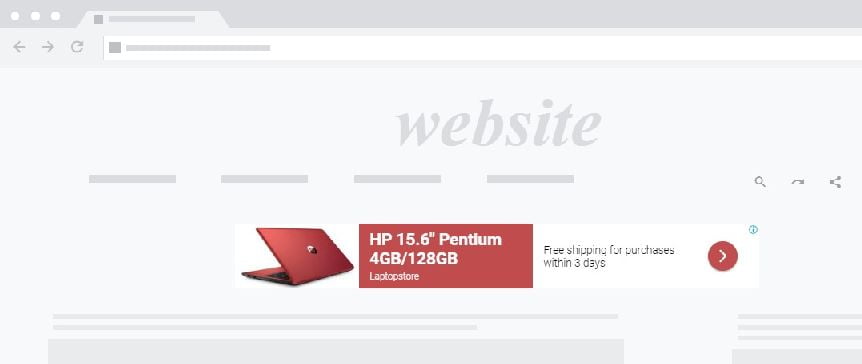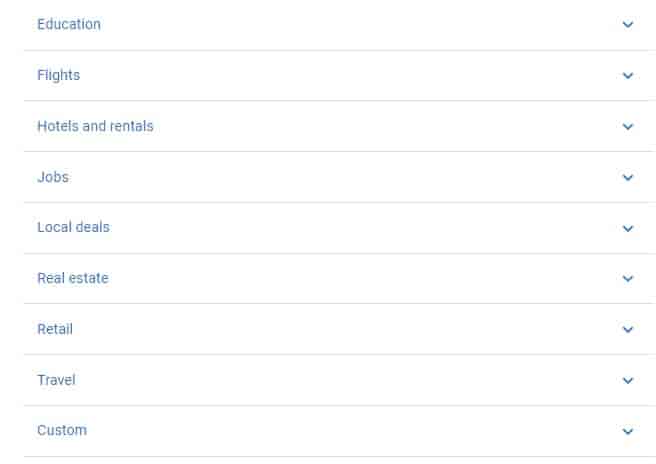Remarketing vs Dynamic Remarketing [Differences, Comparison]
![Remarketing vs Dynamic Remarketing [Differences, Comparison]](https://wuclick.com/wp-content/uploads/2021/02/Remarketing-vs-Dynamic-Remarketing-Differences-Comparison.jpg)
I think there are two remarketing methods that can beat the traditional or standard remarketing method.
They are Remarketing list for search ads (RLSA) and Dynamic remarketing.
While we may also compare those two top performers sometime in the future, in this article I want to compare and see the differences of standard remarketing vs dynamic remarketing.
So, by the end of this article, you should know when and why to use each method to improve the performance of your Google ads campaigns.
How do they work?
Remarketing (or standard remarketing) helps to target your previous site visitors by showing them generic products or services that describe your brand.
That means, it can show any item from your list of products in your ads when remarketing to those visitors.
Dynamic remarketing enables you to remarket with the exact same product or service a visitor viewed before they left your website. In this way, you can take a much more targeted approach and increase the relevancy of your ads.
Currently, this way of advertising is crucial for e-commerce websites. Therefore, if you have a retail business, you need to set up a Google merchant account to be able to use it.
In short, the main difference between them is standard remarketing displays ads at a brand level, and dynamic remarketing displays them at a product level.
Let’s give an example.
Imagine you sell electronics in your online store. A person visited your website and saw a laptop HP 15.6. And after spending some time on your website, she decided to leave.

You with the help of standard remarketing try to catch her attention when she is browsing other websites. So, you run remarketing ads, but they display the images of all related and unrelated products to what she was looking for.
While your products might be popular in the market and you offer great prices, they might not be interesting to her, as she is not looking for them actively.
Instead, with dynamic remarketing, you can take a targeted approach and show her the exact product she viewed from your website. Here, you can do it by displaying HP 15.6 in red color and offer her a 10% discount and free shipping for purchases within 3 days.

As a result, you would dramatically increase the likelihood of conversions for this or any other remarketing campaigns you run.
How easy is it to set them up?
Standard remarketing is easy to set up. Anyone with a basic knowledge of using Google ads can create remarketing ads with a few simple steps without any coding experience.
You can remarket to visitors who made simple interactions like certain page visits to more advanced interactions, which can be measured, with Google Analytics or Google tag manager.
To create it:
- You need to install the remarketing tag on your website
- Create your display ad
- Attach your remarketing list to the ad
And you can start remarketing.
Dynamic remarketing on the other hand requires a few additional steps and you may need the help of your developer as well.
First, you need to create your custom remarketing tag. As it pulls the product unique id from your website and sends it to Google. Then, Google matches that ID with the product feed that you created, and with the help of Google ads product recommendation engine, your remarketing ads can be created.
For retail businesses, a customized remarketing tag pulls product ID from your merchant feed, sends it to Google, and Google matches those IDs with Merchant center feed to create your remarketing ads.
To create dynamic remarketing:
- You need to create your product feed with a basic .csv, .tsv, .xls, or .xlsx files.

- Set up your remarketing tag with custom parameters
- Set up your Dynamic display ads
- Add a global site tag on every page that you track your users
Creating custom ads with each remarketing method
With standard remarketing, which takes longer and several interactions to convert, you can create display ads with static images to GIF and HTML5.
This method is good if you have a small website or you want to remarket to your visitors at the brand level.
However, if you have thousands of products and web pages, it is not cost and time-efficient to create a standard remarketing campaign for each visitor viewing each product page.
With dynamic remarketing, you need to pair your product feed with dynamic ads.
Thus, as the number of products on your website grows, you can update your product feed, upload it again, and increase the number of dynamic remarketing ads.
The feeds that you create can be very useful to generate a high number of ads dynamically from the custom images and texts that you include in the feed.
Also, you need to create different feeds depending on your business type. If no feed can match your business type, you can always create your own custom feed.

Retail feeds are created through Google merchant center, but if you want to create a feed for your retail business through Google ads or your country is not eligible for Google merchant center, you can also create your custom feed.
Comparing main KPIs
As we know already, dynamic remarketing ads are much more relevant for previous website visitors than the traditional one.
That means you can have a higher CTR (Click-through rate) and as a result a higher CVR (conversion rate). Also, as the ads are more targeted, you will have fewer unnecessary ad clicks and you spend less to achieve the same ROAS (return on ad spend).
Consequently, all those factors lead to a higher ROI.

Sierra Trading Post, an outdoor gear and outerwear retail store, increased their conversions 5 times with Dynamic remarketing compared to other remarketing methods.
Ad layouts
As opposed to standard remarketing which enables you to exclude certain underperforming platforms and a certain less converting group of people, with dynamic remarketing Google ads is going to choose the best performing ad layout that is displayed for particular people, placements, and platforms.
Which platforms can use them?
Non-dynamic remarketing campaigns can run in every Google and Google partner platforms.
Dynamic remarketing is only available for display network and app campaigns.
Conclusion
When it comes to reengaging your old visitors back to your site, dynamic remarketing does it on a whole another level.
But it requires some extra steps to set up that if you take, you can dramatically improve the quality of your ads and spending.
Let me know in the comments section below if you think there are any more differences to add…
For any help with your Google ads management, you can contact me through the Contact page.

